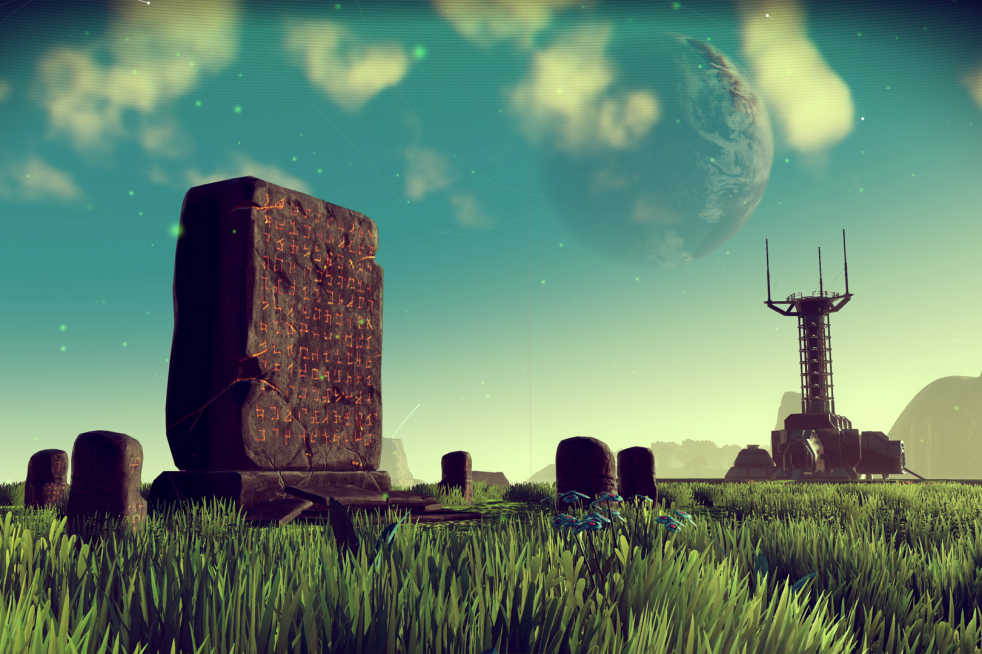In an age of triple-A cash cows and double-digit sequels, gamers certainly have reason to throw their faith into the flourishing indie development scene. Such was the case for “No Man’s Sky,” an ambitious game by the creators of indie hit Joe Danger, Hello Games.
Expectations were as high as the game’s interstellar setting, fueled both by a disenchantment with large game developers and the borderline dishonest promotional tactics of Hello Games. Touted as a procedurally generated space sandbox, the game promised a virtually infinite amount of content. What gamers received, however, was the equivalent of free Denny’s for life: one could keep coming back, but why?
The disappointment of “No Man Sky” is not readily apparent at the start of the game. In fact, a common first impression is one of wonder; the game is nothing short of beautiful. The introduction sees players wake up on an alien planet, tasking them with collecting materials to repair their crashed ship. With a gorgeous randomized sky overhead and a surreal landscape below, it is hard not to be amazed as one sets off on their first quest. The game walks players through the use of their weapon and mining implement, the aptly named “multitool,” as they gather their first resources and fend off several enemies. Delightfully intuitive controls make this process a breeze, fun even, as players undoubtably begin to plan their galactic adventures beyond the introductory area.
These dreams prove to be just that once the ship is repaired and the giant wheel that is No Man’s Sky begins spinning. The menus, a core part of the game from this point forward, are needlessly complicated. Though a seemingly small gripe, players could conceivably spend just as much time navigating the game’s menus as its galaxies, since everything from charging weapons and refueling the ship to crafting and trading relies on the labyrinthine mess.
This certainly detracts from the powerful initial draw of the game, yet at this point it still feels fresh and exciting. After the introduction, players are taught the basics of space travel and combat, a fun process when the immersion is not broken by constant visits to the menus. The “story” (which is nothing more than a series of commands given by a poorly developed space entity) then brings players to another planet where they will once again gather resources. The game’s impressive technology really flexes its muscles here, showing how incredibly different each planet can be in atmosphere, flora and fauna.
But while the visuals are different, the content brings a familiar taste to the table. The animals, exotic and varied as they may appear, still either attack or run meekly for the horizon. The plants still only produce the same basic resource. The trading, conducted with various entities around the planet, still offers roughly the same items. Once players complete the objectives laid forth by the threadbare plot, they will repeat the cycle. So goes the wheel of “No Man’s Sky.”
This is not to say that there is not any sort of progression; the ship, multitool and exosuit (essentially the player character itself) can be upgraded with new abilities or inventory slots found throughout the game. The meager starting capacity makes “No Man’s Sky” feel like an exercise in prioritization, and even late-game players find their inventory space to be frustratingly lacking.
All of these hit-or-miss mechanics will make up one’s journey to complete the game’s main objective; reaching the center of the universe. What lies there remains a mystery throughout the game, but a few brave souls have discovered the sobering reward for their persistence. The end of “No Man’s Sky” is a portal to another universe where players are prompted to make the repetitive journey all over again. Welcome to Denny’s, what will you have?
In all, it would be misleading to call “No Man’s Sky” a bad game. What little content that exists is extremely polished, and small touches like an alien dialect discovery system were clearly passion projects for the small team at Hello Games. Why, then, did it become one of the most hated and refunded games in recent memory?
The answer lies in a laundry list of broken promises. Online multiplayer was explicitly mentioned, yet the final game only allows person-to-person interaction via the naming of discovered species. Factions, planetary physics and different ship classes were also ditched somewhere in development, unbeknownst to the eager followers of the project.
Disregarding these, however, “No Man’s Sky” stands as a solid foundation that, given more depth, could prove to be great. Hello Games has been shown to be receptive in the past, so the game’s potential lies not in what currently exists but in whether or not its creators are willing to take responsibility and answer the call.
